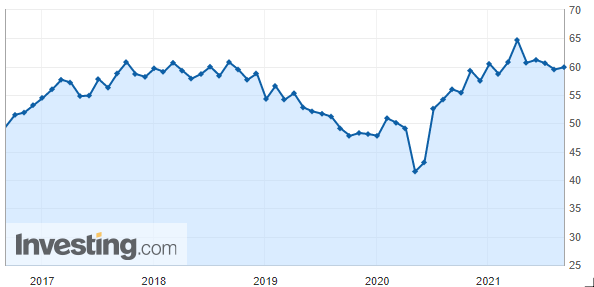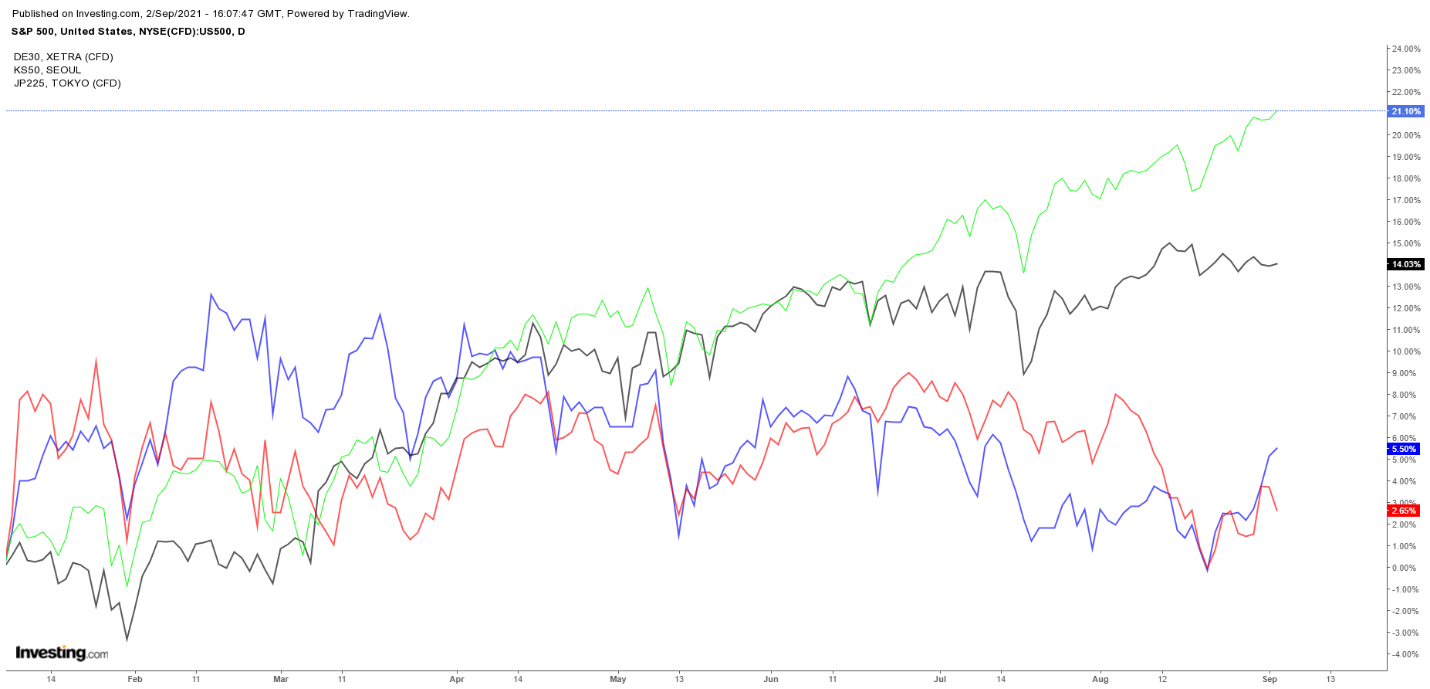This article was written exclusively for Investing.com
After last week's Jackson Hole meeting, it seems clear that the Fed is very likely to start tapering its asset purchase program later this year. It simply may not matter how strong the jobs reports over the near-term are, as long as they show that the trend is getting better; the pace of the improvement only delays the inevitable.
The market has grown so focused on short-term headlines that it may be losing focus on the long-term outlook, which is QE from the Fed will likely end, even if the economy slows more. Add to this some grumblings from a few ECB officials that would suggest the discussion around the ending of QE in Europe may not be too far away. The two QE programs together make up more than $200 billion in asset purchases per month, which means global equity markets will be losing a lot of easy monetary accommodation in the months ahead. Yet, the equity market in the US seems to be ignoring the risk of this policy change.
Slowing Growth Does Not Mean A Recession
Additionally, there are clear signs that economic growth is slowing. The latest China PMI fell dramatically in August. It showed there was a significant slowdown in the services economy. Meanwhile, data in the US has been trending lower in recent weeks as well. It seems to be naïve on the markets part to ignore the threat of slowing growth and less accommodative monetary policy.

The biggest problem is that slowing growth in the US is moderating growth, not the same as heading towards a recession. The slowing growth rates are likely to only bring the economy back to its longer-term growth trends. The latest ISM manufacturing report suggests that the US economy is growing around 4.8% at an annualized rate. It is most certainly slower than the readings witnessed in the spring, but a very healthy reading.

A Massive Disconnect
The other piece the market appears to be choosing to ignore is that if economic growth is slowing, earnings growth will slow faster. Perhaps earnings estimates for the S&P 500 may be too high and need to be adjusted lower if the pace of GDP growth begins to slow and return to more historical growth rates.
Most global markets appear to be aware of this trend, with some markets in Asia down sharply from their highs, while in Europe, some markets have started to stall out. Yet, US markets and especially the S&P 500 and the NASDAQ, continue racing to new highs.

Calling One’s Bluff
It is a massive disconnect that appears to be taking place here and makes little if any sense. But in a way, the time couldn't be more perfect for the Fed to take away QE, especially with the S&P 500 trading at an all-time high. Even a 20% correction in the S&P 500, although painful, would push the index back to levels that are much higher than where it stood before the pandemic began, to around 3,600.
In a sense, it seems that the US equity market is just daring the Fed to begin tapering its asset purchases, or perhaps it is that the equity market thinks the Fed never tapers. Maybe the market is simply calling the Fed's bluff and daring the Fed to taper because, at this point, it is the only thing that could explain an absolutely illogical push higher.
